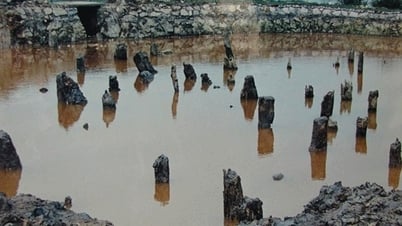According to Space , a coronal mass ejection (CME) on the Sun last weekend (May 7) could create solar storms (geomagnetic storms) that directly affect Earth on May 10 and 11.
The CME eruption was identified by the US National Oceanic and Atmospheric Administration (NOAA) as AR3296, with an explosion level determined as M1.5 based on NOAA's scale and of medium intensity.
The peak of the solar storm will hit Earth on May 10. Experts predict that many areas around the world are likely to experience medium to high levels of geomagnetic activity.

The areas where the aurora can be observed in the Northern Hemisphere will be larger than the solar storms from last weekend's CME eruption. (Photo: Space)
A solar storm, or geomagnetic storm, is a disturbance to the Earth's magnetic field caused by a stream of charged particles emitted from CME eruptions on the Sun. Similar phenomena occur on some other planets in the Solar System, especially those with magnetospheres, including Saturn, Mercury, Neptune, Jupiter, Uranus...
According to Spaceweather.com, the radiation associated with this CME may have caused a series of small shortwave radio blackouts on Earth that occurred last weekend. In addition, this solar storm also created auroras at higher latitudes than usual and could be observed in some US states such as: Oregon, Nebraska and Virginia.
This aurora phenomenon is created by particles from solar storms, after they accelerate along the Earth's magnetic field to higher latitudes, and fall into the upper atmosphere.
There, particles from solar storms interact with matter in the atmosphere, creating shimmering curtains of light in the sky that can be seen with the naked eye.
Although they have little impact on everyday life, intense geomagnetic storms can cause problems for spaceflight because they increase the density in Earth's upper atmosphere. This contributes to increased drag on satellites and other spacecraft.
Tra Khanh (Source: The Space)
Useful
Emotion
Creative
Unique
Wrath
Source




































































































Comment (0)